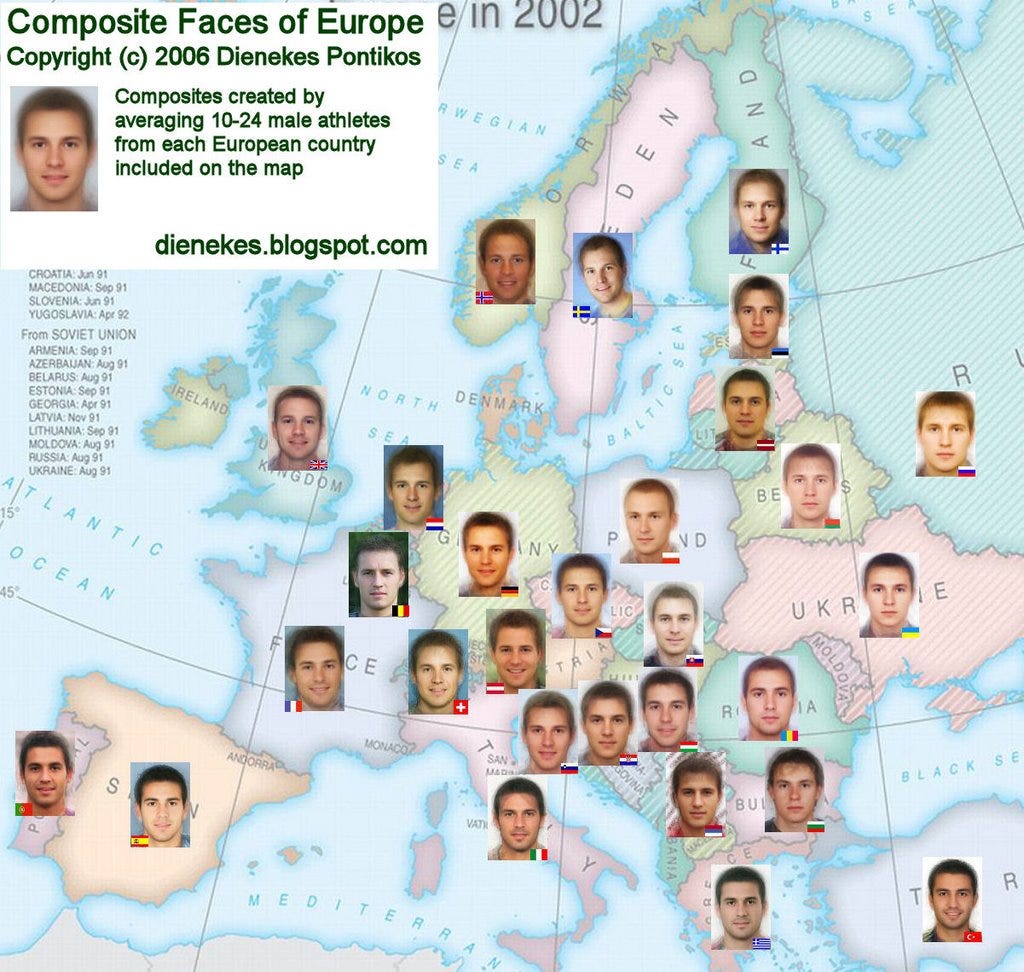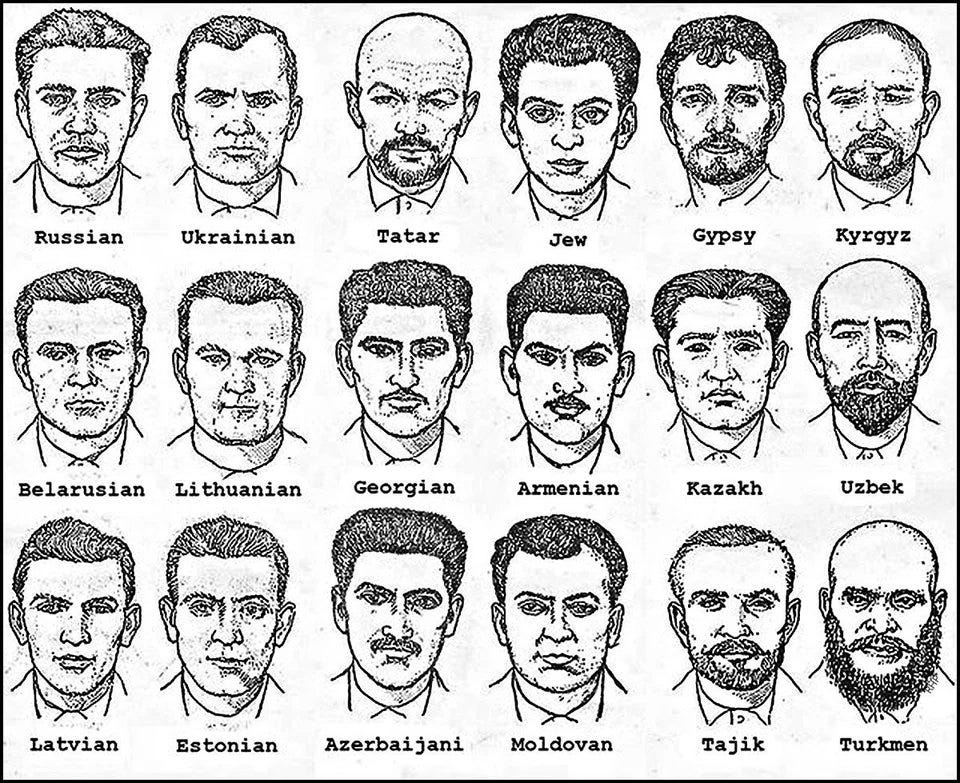NYT: "Taking Aim at Smithsonian, Trump Wades Into Race and Biology"
"His executive order faulted an exhibit which 'promotes the view that race is not a biological reality but a social construct,” a widely held position in the scientific community.'"
While there has been a vibe shift in the more nimble spheres of discourse, in the marble museums of our culture, thinking about race hasn’t moved on at all from the hysteria of June 2020. Thus, from the New York Times’ news section:
Taking Aim at Smithsonian, Trump Wades Into Race and Biology
His executive order faulted an exhibit which “promotes the view that race is not a biological reality but a social construct,” a widely held position in the scientific community.
By Zachary Small
Zachary Small is a Times reporter writing about the art world’s relationship to money, politics and technology.
March 31, 2025, 6:39 p.m. ET
When President Trump issued an executive order claiming that the Smithsonian Institution had “come under the influence of a divisive, race-centered ideology,” he singled out a sculpture exhibition at the Smithsonian American Art Museum in Washington.
The exhibition, called “The Shape of Power: Stories of Race and American Sculpture,” explores how, for more than 200 years, sculpture has both shaped and reflected attitudes about race in the United States.
The president’s order noted, among other things, that the show “promotes the view that race is not a biological reality but a social construct, stating ‘Race is a human invention.’”
In interviews, several scholars questioned why the executive order appeared to take issue with that view, which is now broadly held. Samuel J. Redman, a history professor at University of Massachusetts Amherst who has written about scientific racism, said that “the executive order is troubling and out of step with the current consensus.” He added that pseudoscientific attempts to create a hierarchy of races with white people at the top were seen “in places like Nazi Germany or within the eugenics movement.” …
The quotation about race as a human invention appears to come from the wall text in the show, which notes that humans are “99.9 percent genetically the same” and introduces part of a statement on race and racism by the American Association of Biological Anthropologists.
“Race does not provide an accurate representation of human biological variation,” the statement reads. “Humans are not divided biologically into distinct continental types or racial genetic clusters.
Race is, of course, about who your ancestors are.
Of course, we’ve had huge advances in the 21st century in DNA scans since DNA entrepreneur Craig Venter more or less socially constructed the Race Does Not Exist conventional wisdom in his speech at the 2000 White House Human Genome project ceremony. Now, if you have four grandparents from one place, such as Provence, commercial race science firms like Ancestry.com and 23andMe can usually nail their average location down to within a hundred miles or so, much less just get correct the continent.
Of course, before mass migration, you could pretty much do the same just by looking at people. As recently as the 2002 World Cup, anthropologist Dienekes could overlay photos of World Cup and other national teams to get a sense of what the indigenous people of each European country look like on average. E.g., compare Germany to Poland.
Paywall here.
No longer, of course.
Similarly, this 1960s Soviet police cheat sheet for helping witnesses identify their assailants’ ethnicity was a lot of fun:
Yet, these DNA developments of the last quarter of a century have raised virtually zero questions in the minds of soft subject intellectuals about their Race Does Not Exist Biologically dogma.
It’s hilarious how so many academics simply fail to grasp the fundamental scientific problem of lumping vs. splitting when it comes to human biodiversity. In truth, all fields of academic study have controversies over lumping vs. splitting. For example, in linguistics, how many languages are there in the world? Is a Sicilian speaking a different language or just a different dialect than a Florentine? In art history, what are the historical dates of the Renaissance or the Baroque?
“Instead, the Western concept of race must be understood as a classification system that emerged from, and in support of, European colonialism, oppression, and discrimination.”
“It thus does not have its roots in biological reality
As everybody can tell while watching sports on TV:
Manute Bol was a 7’6” tribesman from the Dinka people of South Sudan, a famously elongated group of Nilotics, along with their arch-rivals, the Nuer. He’d grown up guarding his family’s cattle, once killing a marauding lion with a spear. When Bol showed up to play basketball in America, his coach wrote down that he was 19, although nobody, including Manute, had a clue. Estimates of his age at the time range up to 45.
, but in policies of discrimination,” the statement says. “Because of that, over the last five centuries, race has become a social reality that structures societies and how we experience the world. In this regard, race is real, as is racism, and both have real biological consequences.”
Race was even more clear-cut of a reality before the 15th Century Age of Exploration brought together more people from highly different races, such as Europeans and Amerindians.
Mr. Trump’s executive order came after he moved to purge diversity, equity and inclusion measures.
The executive order took issue with a number of other things about the show, including that it noted that societies, including the United States, had “used race to establish and maintain systems of power, privilege, and disenfranchisement” and claimed that “sculpture has been a powerful tool in promoting scientific racism.”
Museum officials declined to comment about the order and the show, which opened just a few days after the presidential election in early November to positive reviews and runs through Sept. 14.
James Smalls, an art historian who advised the curators of the exhibition and wrote for its catalog, said there had been clear examples in the past of sculpture being used to suggest that some races were superior to others.
He pointed to the 1930s bronze sculptures of Malvina Hoffman made for a “Races of Mankind” exhibit at the Field Museum in Chicago that attempted to show “racial types” from around the world. (Hoffman, who died in 1966, was skeptical about the biological notions of race she was hired to illustrate, seeing her subjects as individuals, not types.) “By the time the exhibition was deinstalled more than 30 years later, more than 10 million people had seen it — as well as its misguided message that human physical differences could be categorized into distinct ‘races,’ ” the Field Museum wrote when it brought some back for a 2016 exhibition.
I wrote about how badly abused has been Malvina Hoffman’s wonderful collection back in 2002 in VDARE:
America's most spectacular trove of human biodiversity depictions is badly abused today. One of the most impressive American female artists remains in obscurity, in an age which dredges up forgotten women artists as role models, because of her sins against racial correctness.
Malvina Hoffman has been called "the greatest American artist you've never heard of" and "the American Rodin." She studied under Auguste Rodin, the greatest sculptor since Bernini, and Gutzon Borglum, creator of Mt. Rushmore. Her style was more realistic than Rodin's, which helped drive her out of fashion in a 20th Century art world obsessed with abstraction.
In 1930, the Field Museum of Natural History in Chicago commissioned her to create 91 full size bronzes and 13 marbles depicting in exquisite detail the "The Races of Mankind." She traveled the world to complete this most titanic sculptural project undertaken by any American woman ever. (Here's her Bushman woman and baby.)
In 1933, the Hoffman exhibit opened in the Field Museum's spectacular custom-built "Hall of Man." It was a major part of the Chicago World's Fair and remained a popular institution for decades afterwards. But it was shut down in 1968 because, well, because it was 1968.
Hoffman's collection was broken up. A quarter of it is now in Cedar Rapids. When I last visited the Field Museum in 1999, only about half the statues were on display, and many of those were pushed into dark corners, often without labels.
The magnificent 6'8" Nilotic Nuer warrior, with proportional masculine endowment, was down in the basement next to the dusty souvenir-making Mold-o-Vac and Penny Squeezer machines.
I asked a curator about this neglect. She told me the sculptures deserved to be treated with disdain because they weren't realistic.
But Ms. Hoffman published photos of many of her subjects in her autobiography.
The only thing unrealistic about them is that Hoffman, Rodin's pupil, no doubt made them all a little healthier, handsomer, and more heroic looking. Is that so bad?
The real reason her great accomplishment is treated with disdain is that it vividly and memorably demonstrates human biodiversity.
And that's what the museum's social anthropologists fear and loathe.
Back to the New York Times:
Smalls said it was important to confront this part of history. “What bothers me most about the executive order is that it shuts down the whole conversation, not allowing for any discussion,” he said. …
What conversation? How often have Race Does Not Exist Biologically dogmatists ever entered into public conversation with their skeptics?
Nicholas Galanin, a 45-year-old artist whose work is inspired by his Indigenous heritage, contributed a 2016 sculpture to the exhibition called “The Imaginary Indian (Totem Pole),” which includes a wooden totem disappearing into floral wallpaper.
“Museums, monuments, and public institutions should be spaces where these stories are held with care, not suppressed for political convenience,” he said. “When we interrogate systems of power and challenge historical narratives that center whiteness and colonial dominance, we do not divide, we restore balance.”
Everybody else is bored with the Racial Reckoning, but vast institutions like the Smithsonian have had few second thoughts.








From the NYT article: “The quotation about race as a human invention appears to come from the wall text in the show, which notes that humans are “99.9 percent genetically the same” and introduces part of a statement on race and racism by the American Association of Biological Anthropologists.”
Sounds impressive. However the overlap between humans and chimpanzees in 98.8%
"Interrogate" They can't help exposing their affinity with the not so secret police. (OIC, Sailer was already there).